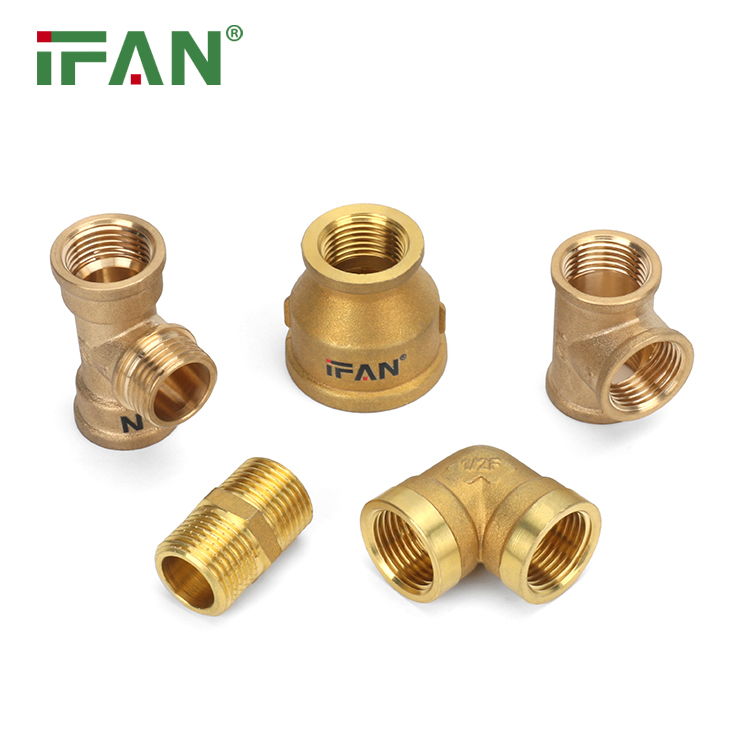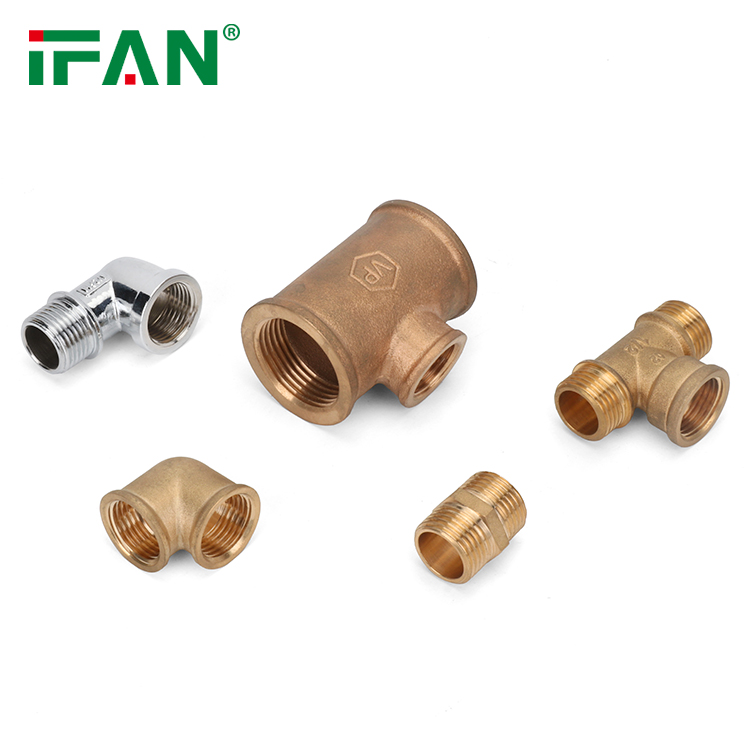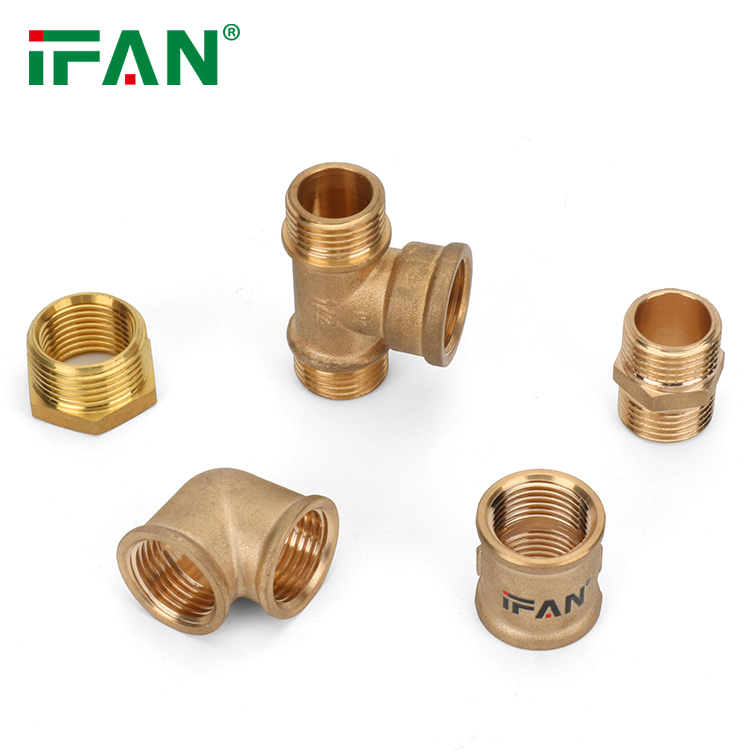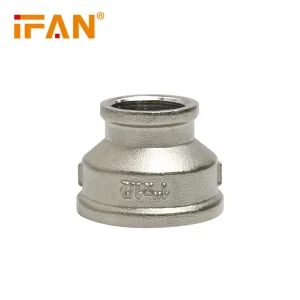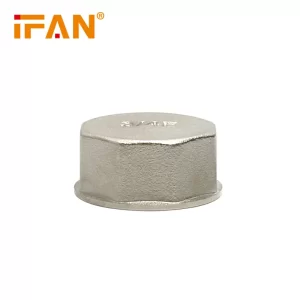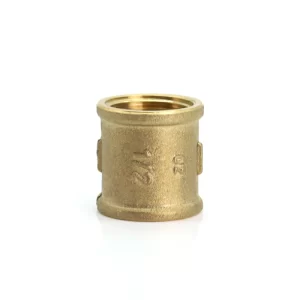Description
IFAN factory 30+ years manufacture experience support color /size customization support free sample.Welcome to consult for catalog and free samples.This is our Facebook Website:www.facebook.com,Click to watch IFAN’s product video.Compared with Tomex products, our IFAN products from quality to price are your best choice, welcome to buy!
Introduction
Brass fittings are commonly used in plumbing, HVAC systems, and other industrial applications due to their durability, resistance to corrosion, and ease of installation. However, as environmental concerns continue to rise, many are questioning the ecological footprint of materials like brass. In this article, we’ll explore the environmental impact of brass fittings, particularly in comparison with other materials like PPR fittings, and discuss sustainable practices and recycling options for both.
What Are Brass Fittings?
Brass fittings are components made from an alloy of copper and zinc, often used in systems that require strong, corrosion-resistant connectors, such as water pipes, gas lines, and HVAC systems. Their popularity is due to their strength, resistance to rust, and long-lasting nature. Brass fittings are typically used in plumbing, industrial applications, and even electrical systems. They come in various shapes and sizes, including elbows, tees, couplings, and adapters.
Environmental Concerns Associated with Brass Fittings
1. Mining and Resource Extraction
Brass fittings are primarily made from copper and zinc, both of which are metals that require mining. Mining is a resource-intensive process that can result in significant environmental damage, including habitat destruction, soil erosion, and water contamination. The extraction of these metals contributes to the depletion of natural resources and increases the carbon footprint of brass products.
2. Energy-Intensive Manufacturing
The production of brass fittings is energy-intensive, as it requires the smelting and alloying of metals at high temperatures. This manufacturing process contributes to greenhouse gas emissions and environmental pollution. Additionally, the transportation of raw materials and finished products from factories to market adds to the environmental impact.
3. End-of-Life Disposal
Although brass is a durable material, it eventually reaches the end of its useful life. When brass fittings are discarded, they contribute to landfill waste unless properly recycled. Improper disposal can also result in the release of harmful chemicals from the materials used to make brass, further impacting the environment.
Sustainability of PPR Fittings: A Viable Alternative
PPR (Polypropylene Random Copolymer) fittings are a popular alternative to brass fittings in plumbing systems, especially for water and gas pipes. PPR fittings are made from a type of plastic that offers several environmental advantages over brass fittings.
1. Lower Environmental Impact in Production
PPR fittings are manufactured through a process that typically requires less energy than the production of brass fittings. Unlike metals, plastic does not need to be mined or smelted at high temperatures. The overall carbon footprint of producing PPR fittings is therefore lower.
2. Durability and Longevity
PPR fittings are durable and have a long lifespan, which means fewer replacements are necessary over time. This reduces the amount of material waste that accumulates, contributing to a longer-lasting infrastructure. Additionally, PPR fittings are resistant to corrosion, reducing the need for repairs and replacements, which ultimately reduces the environmental impact.
3. Recycling Potential
One of the most significant advantages of PPR fittings is their recyclability. PPR is a thermoplastic material, meaning it can be melted down and reformed multiple times without degrading its properties. This makes PPR fittings an environmentally friendly option, as they can be recycled at the end of their life, reducing waste and promoting a circular economy.
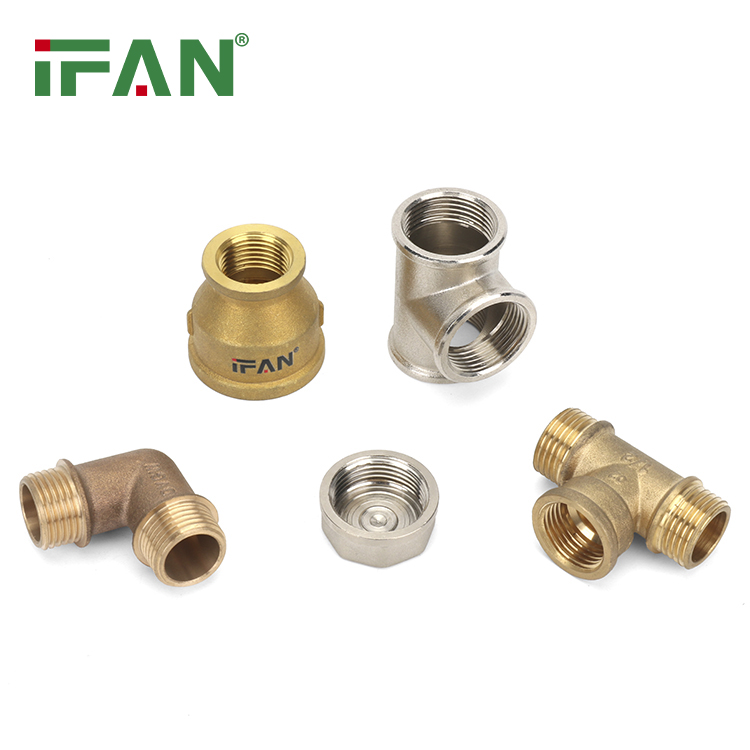
Recycling Brass Fittings: The Path to Sustainability
Despite the environmental concerns surrounding brass fittings, they are highly recyclable, and efforts are being made to ensure that they are properly recycled to minimize their ecological impact.
1. Recycling Process
Brass fittings can be melted down and reprocessed into new products, a process that requires significantly less energy than producing new brass from raw materials. In fact, recycling brass uses up to 90% less energy than mining and refining new copper and zinc. The high recyclability of brass makes it a relatively sustainable material, provided that it is properly disposed of and recycled.
2. The Role of Scrap Metal
Brass fittings are often collected as scrap metal, which can be sold to recycling centers. These centers then separate the metals, melt them down, and reuse them to create new brass products. The recycling of brass fittings helps to reduce the demand for newly mined copper and zinc, which in turn decreases the environmental impact associated with resource extraction.
3. Challenges in Recycling Brass Fittings
Despite the advantages of recycling brass, the process can be hindered by the presence of impurities or contaminants in scrap metal. For example, brass fittings that contain lead or other harmful substances may be difficult to recycle effectively. Therefore, it’s essential that individuals and businesses properly segregate and dispose of brass fittings to ensure they are suitable for recycling.
Comparing Brass and PPR Fittings: Which Is More Sustainable?
While both brass and PPR fittings have their own environmental advantages, PPR fittings generally have a lower carbon footprint in production and are easier to recycle. PPR fittings require less energy to manufacture and are not derived from finite natural resources, unlike brass. Furthermore, PPR is fully recyclable, contributing to a more sustainable lifecycle.
On the other hand, brass fittings are highly durable and have a long lifespan, which makes them a good choice in terms of longevity and the need for fewer replacements. The fact that brass can be recycled effectively also adds to its sustainability.
Ultimately, the choice between brass and PPR fittings depends on the specific requirements of a project, as well as the local infrastructure for recycling and disposal.
Conclusion
The environmental impact of brass fittings is significant, especially when considering the energy-intensive production process and the need for mining raw materials. However, their recyclability and durability make them a relatively sustainable option, especially when compared to other materials. PPR fittings, with their lower production carbon footprint and recyclability, present a compelling alternative for plumbing and other applications. In an era where sustainability is paramount, both brass and PPR fittings have roles to play, but responsible manufacturing and recycling practices will be essential in minimizing their overall environmental impact.
FAQ
1. Are brass fittings recyclable?
Yes, brass fittings are highly recyclable and can be melted down and reprocessed into new products, reducing the need for newly mined copper and zinc.
2. What is the environmental impact of PPR fittings?
PPR fittings have a lower environmental impact in terms of energy consumption during manufacturing, and they are recyclable, reducing waste and promoting sustainability.
3. Which is more sustainable: brass or PPR fittings?
PPR fittings are generally considered more sustainable due to their lower carbon footprint in production and recyclability. However, brass fittings are also durable and recyclable, which makes them an eco-friendly option as well.
4. How can I recycle brass fittings?
Brass fittings can be taken to metal recycling centers, where they are melted down and reprocessed. It’s important to properly segregate them from other materials to ensure effective recycling.
5. Can PPR fittings be used for high-temperature systems?
PPR fittings are best suited for low to medium-temperature applications, such as water and gas pipes. For high-temperature systems, materials like brass may be more appropriate due to their heat resistance.
This article has provided an in-depth look at the environmental impact of brass fittings and their sustainable alternatives, with a focus on PPR fittings. If you have any further questions, feel free to consult the FAQ or contact an expert in materials science or sustainability.
Related products
-
Brass Fittings
Brass Fitting Cap: Sealing Perfection for Plumbing Security


